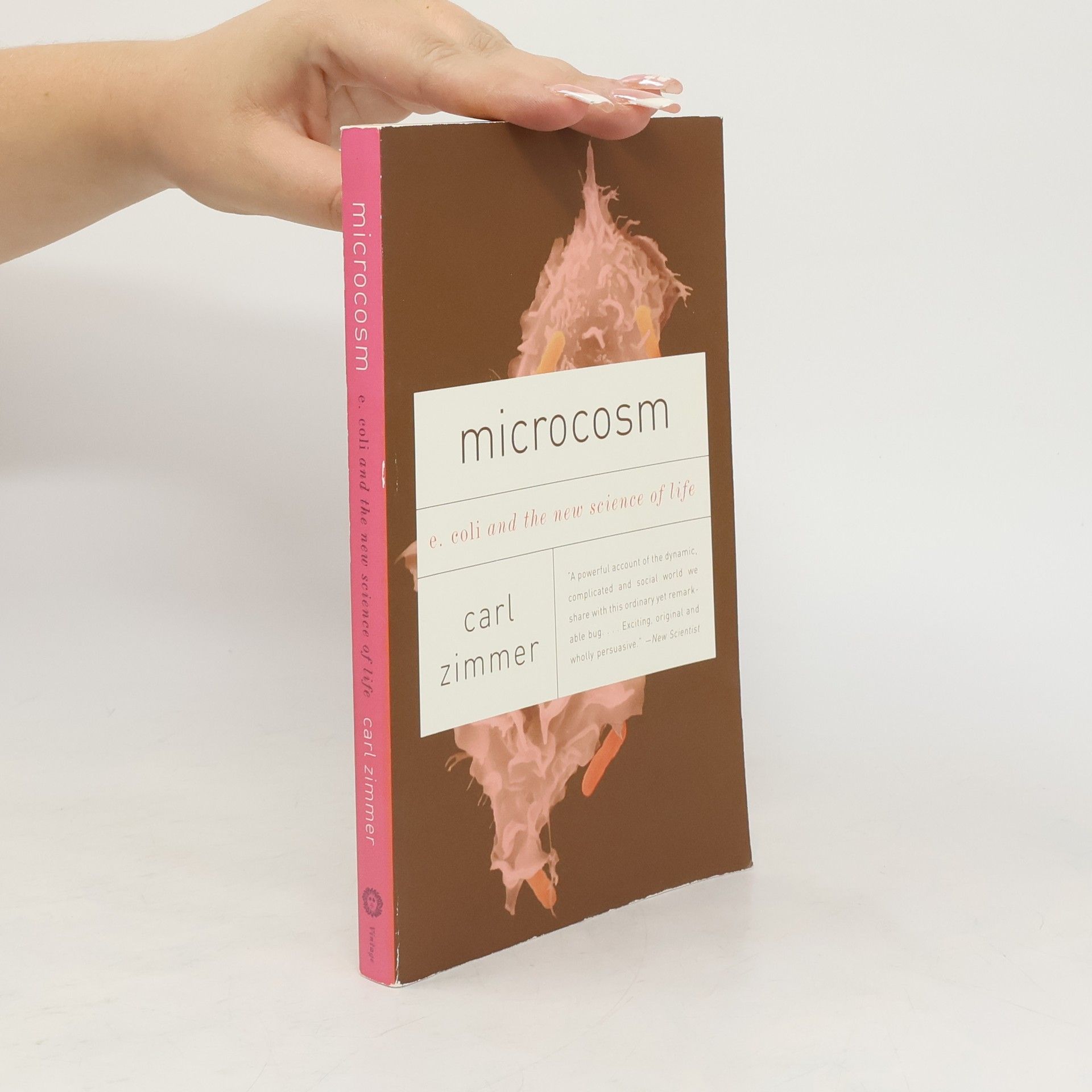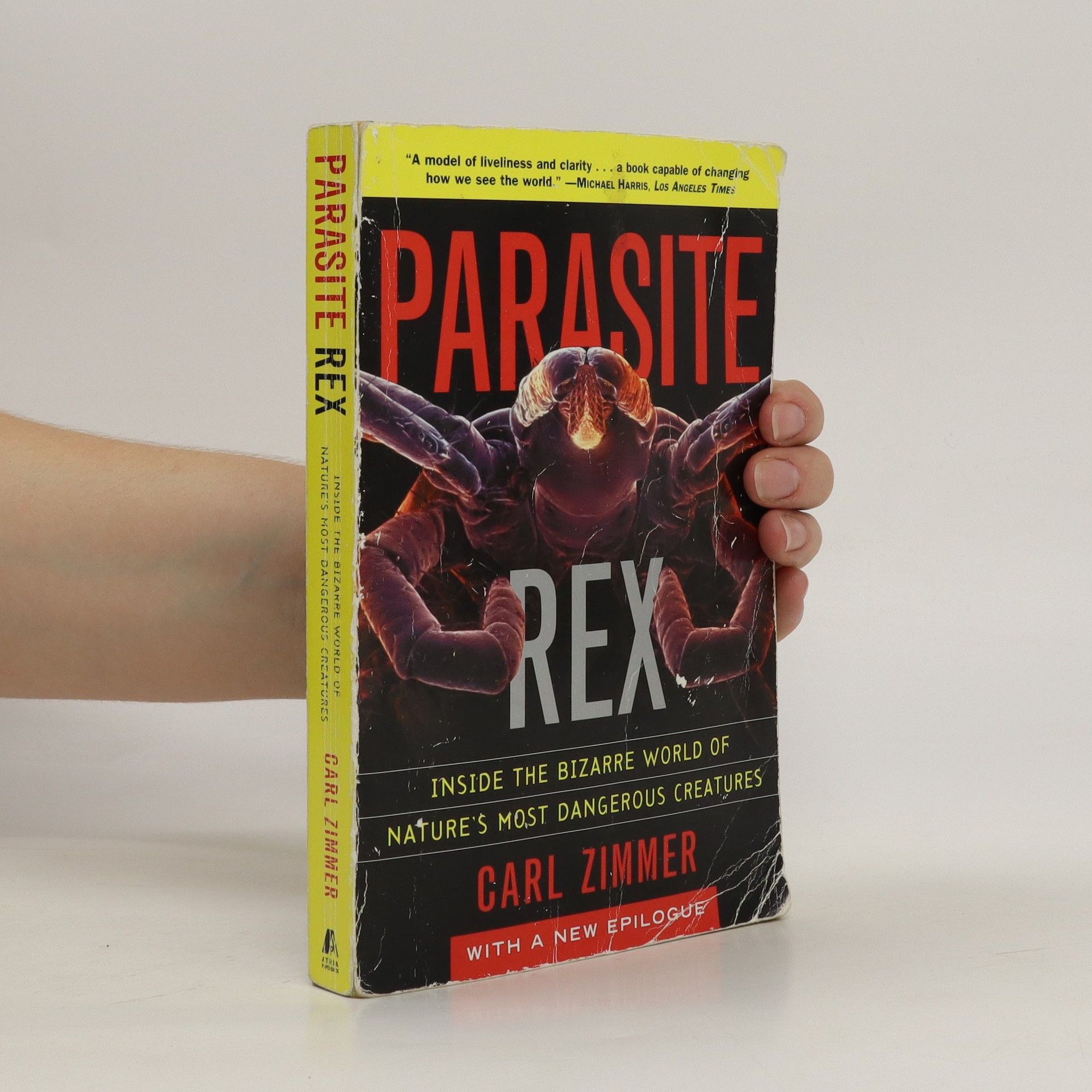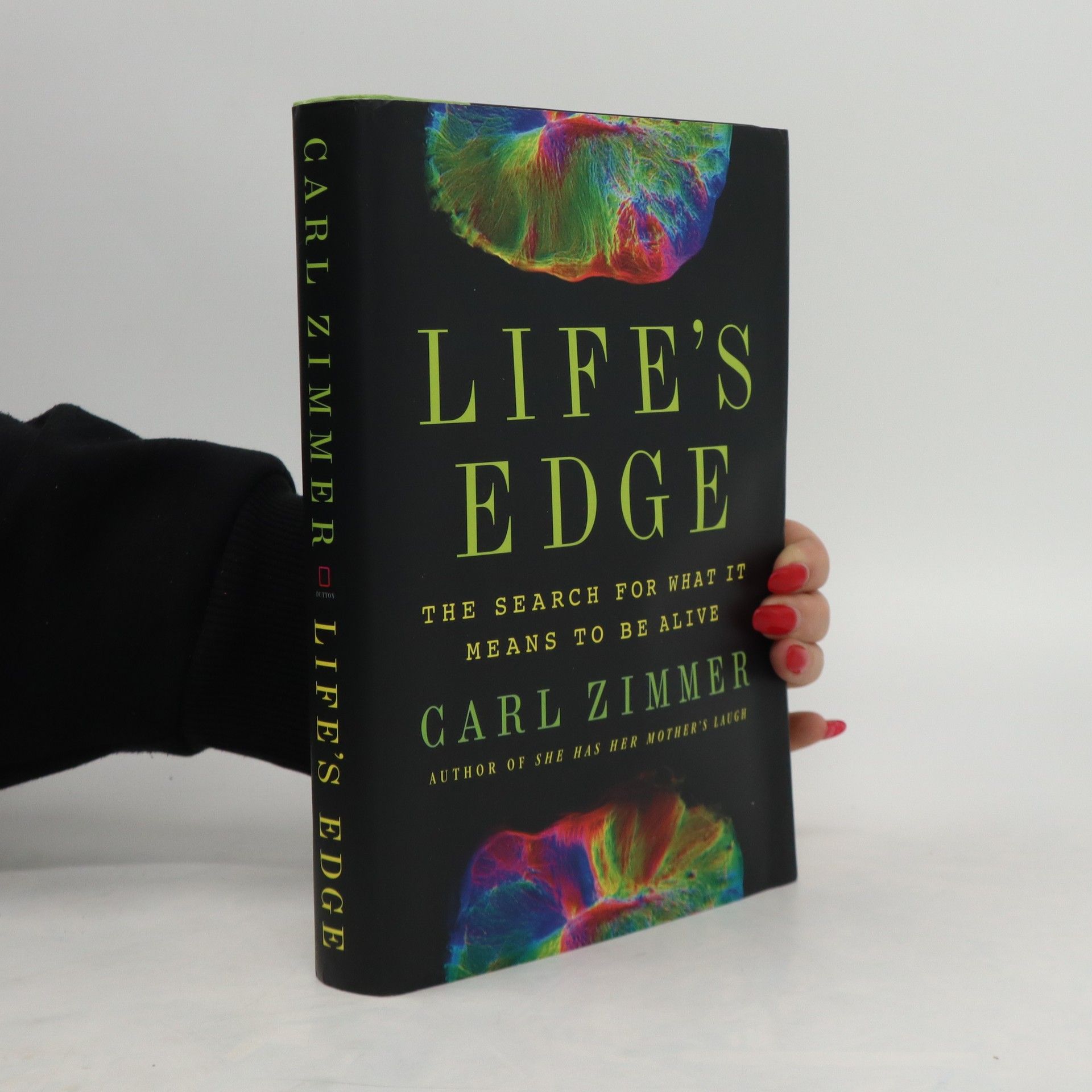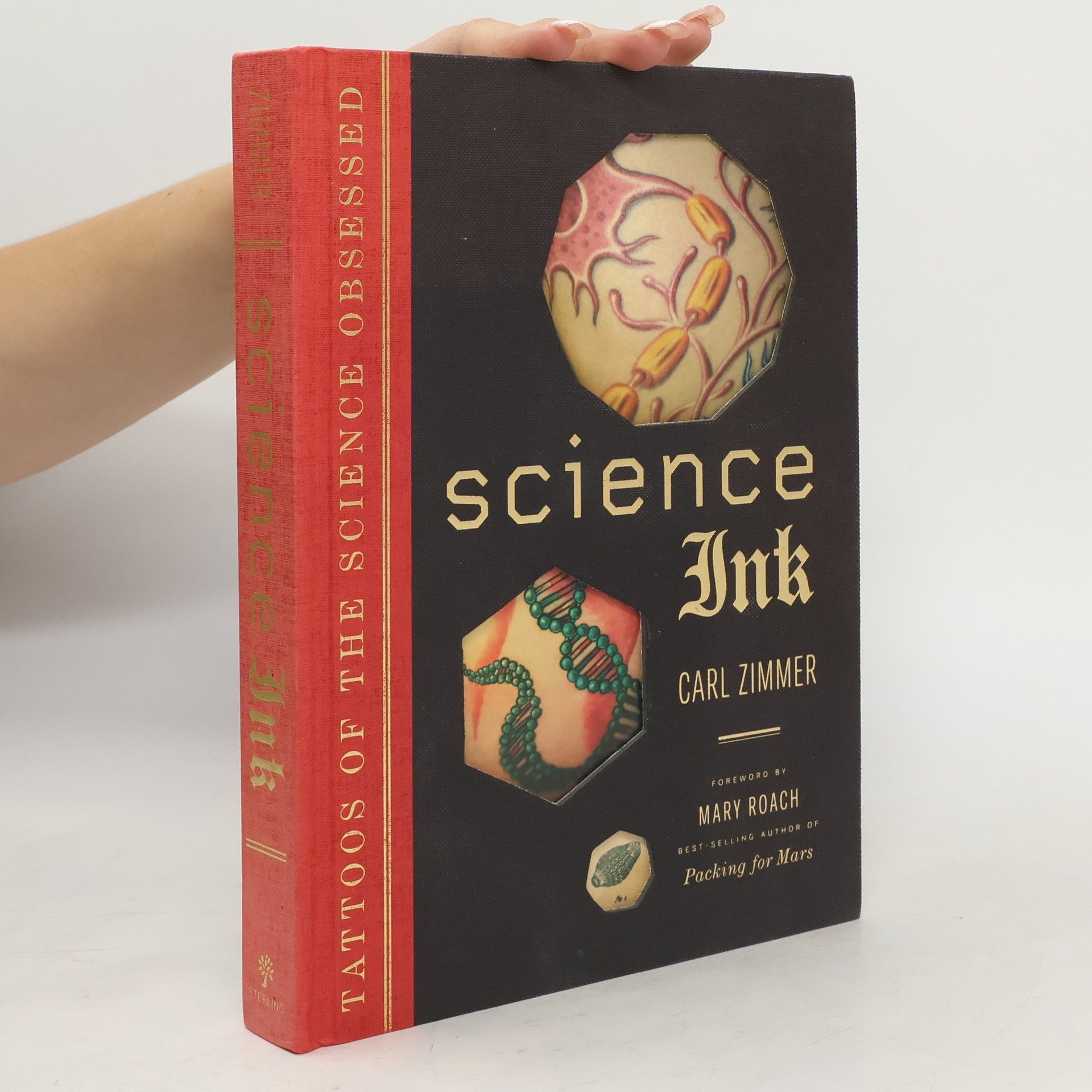Exploring the biology of the air we breathe, this work delves into various elements, including pollen and viruses like COVID-19. The author, a Baillie Gifford-shortlisted science columnist for the New York Times, provides insights into how these airborne entities impact our health and environment. The book highlights the intricate relationships between air quality, biology, and human well-being, making it a timely and informative read for anyone interested in the science of our atmosphere.
Carl Zimmer Book order
Carl Zimmer is a distinguished author who delves into the intricate world of science. Through his books and features for prominent magazines, Zimmer illuminates complex scientific concepts with clarity and wit. His writing often explores profound questions of evolution, biology, and the interconnectedness of life on Earth. Zimmer crafts compelling narratives that introduce readers to cutting-edge discoveries while revealing the wonders of scientific inquiry.







- 2025
- 2023
Award-winning writer, columnist, and journalists Carl Zimmer selects twenty science and nature essays that represent the best examples of the form published in 2022. A collection of the best science and nature articles written in 2022, selected by guest editor Carl Zimmer and series editor Jaime Green.
- 2021
Wirusy są wszędzie. Takie stwierdzenie zapewne cię nie szokuje, zwłaszcza w czasach pandemii COVID-19. Ale czy na pewno? Czy wiesz, że wirusy spadają na ciebie miliardami każdego dnia z najwyższych warstw atmosfery? Że pławisz się w bilionach ich cząstek podczas każdej kąpieli w oceanie? Albo wreszcie – że twoje własne geny usiane są szczątkami dawno już umarłych wirusów, które w prehistorii zaatakowały przodka naszego gatunku? Carl Zimmer w swojej książce opisuje świat niezwykły; świat, w którym nie rządzimy my, lecz właściwie nieożywione replikatory, maleńkie maszyny potrafiące podporządkować sobie dowolny proces w naszym ciele i w ciałach innych organizmów żywych. Boimy się ich – i słusznie. Ale jeśli spojrzymy na wirusy inaczej, poznamy grupę niezwykłych tworów, balansujących na cienkiej granicy między życiem i materią martwą, odpowiedzialnych za krążenie pierwiastków na Ziemi, regulację klimatu całej planety, czy wreszcie – powstanie wiele miliardów lat temu życia takiego, jakim znamy je obecnie.
- 2021
Life's Edge
- 348 pages
- 13 hours of reading
"We all assume we know what life is, but the more scientists learn about the living world-from protocells to brains, from zygotes to pandemic viruses-the harder they find it is to locate life's edge"--. Provided by publisher
- 2020
Celebrated science writer Carl Zimmer's classic book, updated in a new edition, is an eye-opening look at Covid-19 and the many other viruses that shape our planet and ourselves.
- 2019
She Has Her Mother's Laugh
- 672 pages
- 24 hours of reading
"Celebrated New York Times columnist and science writer Carl Zimmer presents a profoundly original perspective on what we pass along from generation to generation. Charles Darwin played a crucial part in turning heredity into a scientific question, and yet he failed spectacularly to answer it. The birth of genetics in the early 1900s seemed to do precisely that. Gradually, people translated their old notions about heredity into a language of genes. As the technology for studying genes became cheaper, millions of people ordered genetic tests to link themselves to missing parents, to distant ancestors, to ethnic identities ... But, Zimmer writes, 'Each of us carries an amalgam of fragments of DNA, stitched together from some of our many ancestors. Each piece has its own ancestry, traveling a different path back through human history. A particular fragment may sometimes be cause for worry, but most of our DNA influences who we are--our appearance, our height, our penchants--in inconceivably subtle ways.' Heredity isn't just about genes that pass from parent to child. Heredity continues within our own bodies, as a single cell gives rise to trillions of cells that make up our bodies. We say we inherit genes from our ancestors--using a word that once referred to kingdoms and estates--but we inherit other things that matter as much or more to our lives, from microbes to technologies we use to make life more comfortable. We need a new definition of what heredity is and, through Carl Zimmer's lucid exposition and storytelling, this resounding tour de force delivers it. Weaving historical and current scientific research, his own experience with his two daughters, and the kind of original reporting expected of one of the world's best science journalists, Zimmer ultimately unpacks urgent bioethical quandaries arising from new biomedical technologies, but also long-standing presumptions about who we really are and what we can pass on to future generations"--Publisher's website
- 2011
Science Ink
- 271 pages
- 10 hours of reading
"Body art meets popular science in this elegant, mind-blowing collection, written by renowned science writer Carl Zimmer. This fascinating book showcases hundreds of eye-catching tattoos that pay tribute to various scientific disciplines, from evolutionary biology and neuroscience to mathematics and astrophysics and reveals the stories of the individuals who chose to inscribe their obsessions in their skin. Best of all, each tattoo provides a leaping-off point for bestselling essayist and lecturer Zimmer to reflect on the science in question, whether it's the importance of an image of Darwin's finches or the significance of the uranium atom inked into the chest of a young radiologist."--from publisher's description
- 2010
Suzie Gilbert discovered her true calling when she began working at a local animal hospital. Eventually, she started bringing abused and unwanted parrots home, and volunteering at a local raptor rehabilitation center. From there it was a short flight to her ultimate commitment: Flyaway, Inc., the nonprofit wild bird rehabilitation center she ran out of her own home. With heart and delightful wit, Gilbert chronicles daily life in her household-cum-bird-hospital, and recounts the resulting chaos as she, her husband, and their two young children struggled to live in a home where parrots shrieked Motown songs and recuperating herons took over the spare bathroom. Flyaway is a remarkable story of compassion for and dedication to beautiful creatures—and the importance of pursuing even the most unlikely of dreams.
- 2009
Microcosm : E. coli and the new science of life
- 256 pages
- 9 hours of reading
A Best Book of the YearSeed Magazine • Granta Magazine • The Plain-DealerIn this fascinating and utterly engaging book, Carl Zimmer traces E. coli's pivotal role in the history of biology, from the discovery of DNA to the latest advances in biotechnology. He reveals the many surprising and alarming parallels between E. coli's life and our own. And he describes how E. coli changes in real time, revealing billions of years of history encoded within its genome. E. coli is also the most engineered species on Earth, and as scientists retool this microbe to produce life-saving drugs and clean fuel, they are discovering just how far the definition of life can be stretched.
- 2006
Jak se duše stala tělem: Výzkum mozku mění svět
- 291 pages
- 11 hours of reading
Kniha Jak se duše stala tělem je pozoruhodný, dosud nepopsaný příběh vyprávějící o dramatickém historickém zvratu - vzrušujícím objevu funkce lidského mozku. Autor vypráví o objevování mozku v Anglii 17. století, příběh, který se odvíjí ve smrtící perspektivě občanské války, moru a velkého londýnského požáru. Na počátku tohoto století nikdo nevěděl, jak mozek funguje, nikdo neměl ponětí, jak vypadá v nedotčeném stavu. Na konci století věda o mozku zapustila kořeny. Pomohla překonat většinu běžných mylných představ a převládajících filosofií týkajících se lidí, Boha a vesmíru.



